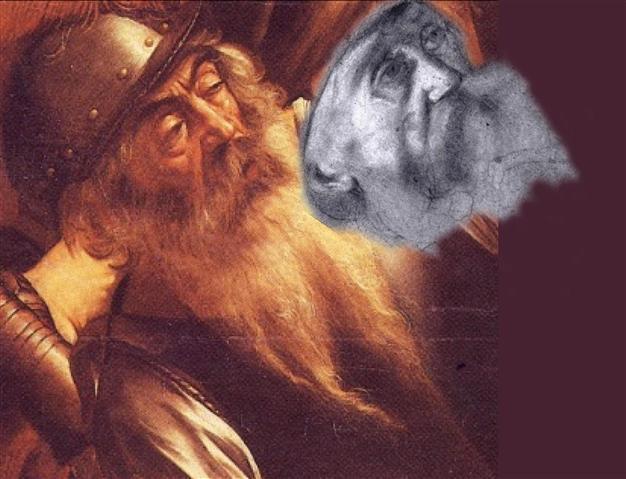Experts in Caravaggio works discovery claim
ROME - Reuters

This photo shows a face in a drawing found in Milan and attributed to the young Caravaggio,
compared to that of the old soldier in the ‘Conversion of Saul’ by Caravaggio. EPA photo
Italian art experts say they have discovered about 100 previously unknown sketches and paintings by
Caravaggio, the Italian baroque
painter whose realistic and dramatic canvases set a new standard for Western art.
Only some 90 paintings by Caravaggio, who died in 1610 in his late 30s after a turbulent life, and was a master of using the chiaroscuro technique of lighting to make his subjects seem to come alive, previously were known to exist.
Art historians Maurizio Bernardelli Curuz and Adriana Conconi Fedrigolli are publishing two e-books on Amazon in Italian detailing their research and attribution process for Caravaggio’s early works.
Sketches make up the bulk but there are paintings as well. Most were found among the archives of mannerist artist Simone Peterzano in Milan’s Sforzesco castle, according to an interview with the authors published by Ansa news agency on Thursday.
The authors could not be immediately reached for comment.
The total value of the artworks is about 700 million euros ($870 million), the art historians estimated. The works found in Peterzano’s studio are owned by the city of Milan.
Caravaggio - whose real name was Michelangelo Merisi - studied under Peterzano from 1584 to 1588, and no paintings from his youth are known to have survived.
Doubt on claimsOther art historians immediately cast doubt on the authors’ claims after seeing pictures of the sketches attributed to Caravaggio, cautioning that the research had yet to be verified.
“I will wait to consult the complete research, but the drawings I’ve seen so far do not seem to me attributable to Caravaggio,” said Francesca Cappelletti, a researcher and author of a book on the Lombardy master.
“Their research must be verified by the scientific community,” said Cristina Terzaghi, an art historian at the University of Rome III.
italy,
